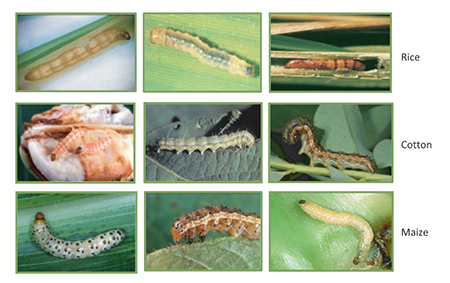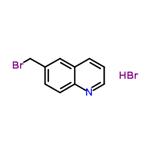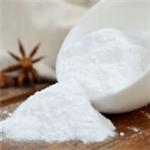The review of Bacillus thuringiensis
Jan 13,2022
Introduction
Bacillus thuringiensis (Bt) is a soil bacterium that forms spores during the stationary phase of its growth cycle. The spores contain crystals, predominantly comprising one or more Cry and⁄or Cyt proteins (also known as δ-endotoxins) that have potent and specific insecticidal activity. Different strains of Bt produce different types of toxin, each of which affects a narrow taxonomic group of insects. Therefore, Bt toxins have been used as topical pesticides to protect crops, and more recently the proteins have been expressed in transgenic plants to confer inherent pest resistance. Bt trans-genic crops have been overwhelmingly successful and beneficial, leading to higher yields and reducing the use of chemical pesticides and fossil fuels.
Toxin structure and specificity
Many researchers have attempted to introduce taxonomic classification systems for Bt, using various criteria such as serotyping, phage susceptibility and plasmid profiles, and this has resulted in the classification of approximately 100subspecies. Although there is a good correlation between Bt subspecies and insect host range at the family level, the relationship tends to break down at the genus and species levels because most Bt strains can synthesize more than one toxin, resulting in complex and overlapping host pro-files. For example, most Bt kurstaki strains are specific for lepidopteran insects (butterflies and moths), whereas israelensis strains are specific for dipterans (flies) and morrisoni strains are specific for coleopterans (beetles). Other strains are not active against insects at all, but are toxic towards different invertebrates. For example, Bt strains containing only Cry5- and Cry6-type toxins are active against nematodes. At the genus and species level, it is more useful to classify Bt strains functionally on the basis of which toxin pro-teins they produce, as this is a more logical way to define the host range. The toxins can be described in terms of their amino acid sequences, protein structures and modes of activity (Crick more et al., 1998). Cry toxins interact with specific receptors located on the surface of midgut epithelial cells and are activated by host proteases following receptor binding, resulting in the formation of a prepore oligomeric structure that is insertion competent. In contrast, Cyt toxins directly interact with membrane lipids and insert into the membrane. The known Cry and Cyt proteins now fall into 32 sets including Cyt1, Cyt2 and Cry1to Cry67[1].
The biology of Bt toxins
These early experiments showed that Bt toxins needed to be activated in the gut, and it was soon discovered that the critical factors were an alkaline environment and the presence of specific proteases, which cleaved the innocuous protoxin into its active form. Once activated by proteolysis, each toxin binds to receptors in the brush border membrane and causes pores to open, disrupting them ovement of solutes across the gut epithelium and causing the influx of water. The toxins were shown to be orally lethal to caterpillars in pure form, and the pro-toxins could be converted into active toxinsin vitro, using specific pro-teases under alkaline conditions. The requirement for alkaline conditions, specific proteases and specific receptors explains why Bt is harmless to mammals (which have anacidic gut and lack the corresponding receptors) and why each toxin has a narrow host range

Fig.1 Nine common pests of rice, cotton and maize that are controlled by Bt crops[5]
Advantages and disadvantages of topical Bt pesticides
Topical Bt sprays are advantageous in terms of their safety, specificity and potency compared to chemical sprays, and are also biodegradable, which provides for alarge and competitive market. However, this last‘advantage’ needs to be cited with caution, because Bt isonly effective when present on the plant organs on which insects feed. Usually Bt is applied when early instar larvae are present, because older larvae are more tolerant. Bt sprays persist for only a few days on the leaf surface because UV light, weather, the chemical environment of the leaf surface and the presence of proteinases contribute to the degradation of Cry proteins. Many spores are washed off the leaf surface into the soil. There is no evidence to suggest Bt is dangerous to humans and other mammals, and indeed the studies performed thus far suggest Bt is one of the safest microbial products known. Given its extensive use, it is remarkable that only a single injury sustained from the use of Bt products in the field has been reported, the identification of Bt spores in the corneal ulcer of a farmer whose face was splashed with Dipel. Laboratory mice can survive subcutaneous injections of 106 spores, or 107spores administered intranasally [2], and although limited mortality is evident when 108spores are delivered intranasally, this is equivalent to an exposure level of 1012in humans, or one billion times higher than the maximum ever encountered in the field during spraying. Even so, concerns about the environmental persistence of Bt spores in soil and water have encouraged research into different formulations, including pure protein crystals that are applied in the same way as the spores. As these are even more vulnerable to degradation than the spores, Cry proteins have been encapsulated in the bacterium Pseudomonas fluorescens (e.g. in the My cogen products MVP which target slepidopteran pests and M-Trak which targets coleopteran pests). This encapsulation strategy protects the Cry protein from UV light and chemical degradation, and allows large amounts of each Cry protein to be produced using high-yielding expression constructs, but the bacteria do not per-sist in soil or water for as long as Bt spores. Crop Genetics International developed a similar strategy using Clavibacterxylivar. cynodontis, an endophytic bacterium that can penetrate the vascular system of plants, and this confers resistance to the European corn borer [3]. The advantages and disadvantages of topical application are listed in Table 1[4].
Table 1 The advantages and disadvantages of topical application[5]

Reference
1 Akhurst, R.J., James, W., Bird, L.J. and Beard, C. Resistance to the Cry1Ac δ-endotoxin of Bacillus thuringiensis in the cotton bollworm, Helicoverpa armigera (Lepidoptera:Noctuidae). J. Econ. Entomol. 2003, 96: 1290–1299.
2 Arantes, O. and Lereclus, D. Construction of cloning vectors for Bacillus thuringiensis. Gene, 1991, 108: 115–119.
3 Aronson, A. Sporulation and delta-endotoxin synthesis by Bacillus thuringiensis. Cell. Mol. Life Sci. 2002, 59: 417–425.
4 Baum, J.A., Johnson, T.B. and Carlton, B.C. Bacillusthuringiensis.Natural and recombinant bioinsecticide products[J]. Methods Biotechnol. 1999,5: 189–209
5 Georgina Sanahuja,Raviraj Banakar,Richard M. Twyman,Teresa Capell,Paul Christou. Bacillus thuringiensis: a century of research, development and commercial applications[J]. Plant Biotechnology Journal, 2011, 9(3): 283-300
- Related articles
- Related Qustion
- Uses of Bacillus thuringiensis Nov 16, 2021
Bacillus thuringiensis is a group of strains or isolates of naturally occurring soil bacteria of the Bacillus cereus group that are used to control insect pests on agricultural crops, stored food crops, ornamental plants, forests, and nuisa
Cetylpyridinium chloride (CPC) is a quaternary ammonium salt antiseptic that is used in many over-the-counter personal-care products: mouthwashes, toothpastes, lozenges, and breath and nasal sprays, to name a few.....
Jan 13,2022DrugsEthylhexylglycerin is a relatively new cosmetic ingredient that is used for its surfactant, emollient, skin-conditioning and antimicrobial properties.....
Jan 13,2022APIBacillus thuringiensis
68038-71-1You may like
Bacillus thuringiensis manufacturers
- Bacillus thuringiensis
-

- $10.00 / 1KG
- 2024-04-28
- CAS:68038-71-1
- Min. Order: 1KG
- Purity: 99%
- Supply Ability: g-kg-tons, free sample is available
- Bacillus thuringiensis
-

- $3.20 / 25Kg/Drum
- 2023-12-12
- CAS:68038-71-1
- Min. Order: 1KG
- Purity: 99%
- Supply Ability: 20tons per month
- Bacillus thuringiensis
-

- $50.00 / 1kg
- 2023-11-02
- CAS:68038-71-1
- Min. Order: 1kg
- Purity: 0.99
- Supply Ability: 20 tons




